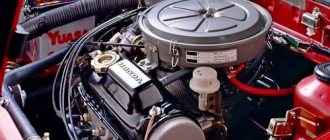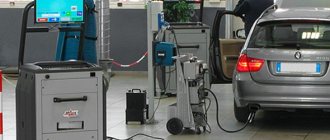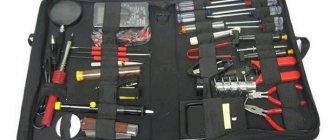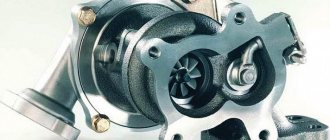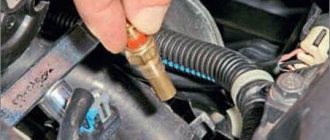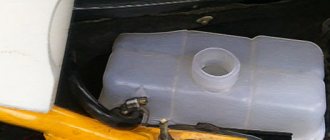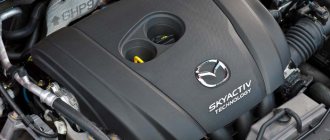Restoring a car to good technical condition can not only take a lot of time, but also require significant investments. One of the most expensive types of repairs can be a comprehensive repair of the air conditioning system in a car. That’s why it’s worth thinking about and learning about air conditioner repair and restoration yourself.
Of course, if this is a serious breakdown and a more detailed examination of the entire system is required, then you should contact the service center and see real specialists, but sometimes breakdowns and problematic nuances can be eliminated yourself. The main thing is to know where to start. It is worth noting that repairing a car air conditioning compressor is not an easy task. And therefore, it’s worth starting to determine the existing problems and the existing technical nuances of the entire system. The operating principles of the air conditioning compressor are described in the video:
Compressor device
This is an important component of the air conditioner, which is a special pump. The compressor's job is to distribute compressed freon throughout the radiator. Due to this, the temperature of the steel elements of the evaporator is reduced under the influence of low temperature and, therefore, the air is cooled.
Air conditioning compressor device
Note! The metal pulley, which is located on the compressor shaft, is driven by a belt coming from the crankshaft. Therefore, among all possible malfunctions of the device, the most common is damage or slippage of this belt.
Device and purpose
This is the most complex node in the entire system. It is designed to compress freon. This gas, under pressure, changes from liquid to gaseous state. In addition, the refrigerant in this form is quite hot.
The operation of the unit is ensured by a drive belt that rotates an electromagnetic clutch. And the belt is driven by the rotation of the engine crankshaft. Thus, the air conditioner only operates when the engine is running. If the engine is turned off, the system will not work.
Common causes of malfunctions
A car's air conditioning compressor can fail for various reasons, for example, due to damage to the belt drive or pulley bearing. Even a beginner can cope with these breakdowns, since the replacement procedure is simple. Also, the cause of the malfunction may be hidden in the piston, or more precisely, in its jamming. In such cases, it is necessary to replace the entire unit, since a damaged piston can destroy the walls with valves.
Air conditioning compressor breakdowns
Poor fixation at the mounting points or rupture of the oil seal can lead to a loss of tightness in the compressor, as a result of which the performance of the air conditioner is reduced. Looseness can be eliminated by tightening the fasteners, and if the oil seal is damaged, it must be replaced. It is advisable to buy a complete repair kit and replace all the gaskets, and not just the oil seal - it’s more reliable.
Effective methods for disabling car alarms are described here.
Signs
Timely troubleshooting of compressor faults is important, so it is important to be able to recognize typical signs of breakdowns. This will not only save time on repairs, but also prevent more serious damage that cannot be repaired at home. Below are the most common symptoms of a faulty car air conditioning compressor.
Appearance of noise
Suspicious sounds may come from the compressor when the engine is running and the air conditioning is turned off. There is a high probability that the appearance of noise is associated with damage to the bearing (its slight movement in the seat due to overheating or damage to the electromagnetic coil). In such cases, it is necessary to replace the failed part, otherwise prolonged operation of the cooling system with a skewed pulley will lead to jamming of the compressor and more serious damage.
The air conditioning compressor is noisy
Clutch doesn't work
If the clutch does not turn on even when voltage is applied to the coil, then the problem must be looked for in the distance (gap) between the pressure plate or pulley. Also, a malfunction of the electromagnetic clutch may be due to its melting. Also, the clutch may not engage due to excessive bearing wear.
Electromagnetic coupling
The problem can be solved by replacing the damaged bearing or other parts (pressure plate, coil, etc.). To work, you will need a standard set of tools that should be in the trunk of every motorist.
Compressor leakage
One of the most common malfunctions, which, if the part body remains intact, can be easily eliminated by replacing the repair kit. To do this, the device must be disassembled, washed, new elements installed and reassembled. In rare cases, the tightness is broken when the housing is damaged, but there is no need to buy a new compressor, since damaged areas of the part can be restored using argon welding.
Application of argon welding
Noise when the engine is running
When the engine is running and the air conditioning is on, a knocking or monotonous hum may occur that comes from the compressor. In this case, the device can work properly. Here you need to check the discharge and suction lines with the car air conditioner turned on - a pressure drop is possible.
Metallic knock in the compressor area
Air conditioning does not work on Ford Focus 2 - Replacing the air conditioning clutch
This work took us about 60 minutes. Cost of replacing the air conditioner clutch: 2400 rubles.
Air conditioner clutches are in stock
. Since the beginning of summer, most Focus 2 owners have problems turning on the air conditioner. Most often, the problem is not the lack of freon, but the air conditioner clutch. We do not recommend installing used ones. Our service always has new couplings, belts and pulleys - a complete repair kit.
Our long-time client contacted us with a similar problem and we got to work
To gain access to the air conditioning compressor, and the clutch is located in it, it is necessary to dismantle the engine protection. To do this, you need to unscrew the bolts.
In our case, a simple boot acts as protection. The car owner did not install iron protection.
In addition to protecting the engine, you need to unscrew the right fender liner
Along the way, with little access, the technician removes the compressor pulley fasteners
Next we unscrew the wheel
After removing the wheel, bend the fender liner
Now we have full access, after which replacing the Ford Focus 2 air conditioning clutch is possible. Without removing the wheel, at home, it is extremely difficult to carry out this work.
To remove the pulley, remove the retaining ring
This is what the removed retaining ring looks like
In addition to the standard set of tools, we will need a special puller
The main thing is not to break the thread
The pulley is unscrewed and can now be removed
Removed, worn pulley. It will be replaced with a new one according to customer's request
We now have access to the A/C clutch itself, but as with the pulley, the circlip must be removed
This is what the retaining rings look like. It is difficult to confuse them when installing - different diameters
Removing the air conditioner clutch
The clutch itself is electronic and has a terminal. It must be carefully disconnected without damaging the wiring.
Faulty A/C clutch
Insert a new coupling
Secure with a locking ring
Next we install a new pulley
And secure it with a locking ring.
Almost everything is ready
Finally, screw in the damper fasteners for the pulley. They also asked to install it new.
All that remains is to put on the belt, but to do this you need to slightly loosen the air conditioning compressor fasteners
Next we put on the belt
The car is ready
All that remains is to reinstall the fender liner, engine protection and wheel. We will not show this process, since you have already seen it at the beginning of the article.
Dear Focus 2 owners, we are a specialized repair and maintenance service for Ford vehicles. This work, referred to as replacing the air conditioner clutch for Ford Focus 2, is a small demonstration of our capabilities. Our technicians know your Ford down to the last screw and are able to provide repairs at the highest level. In addition, we offer a very good range of spare parts
in stock
Repair features
A decrease in the performance of the air conditioner in combination with a humming noise may indicate excessive wear on the bearing surface or high tension on the drive shaft belt. All repair work consists of loosening the belt and replacing the damaged bearing.
Below are step-by-step instructions for adjusting the shaft drive belt. By following its exact sequence, even a novice motorist can repair the air conditioner.
Step 1. Rotate the crankshaft clockwise. To do this, use a socket wrench.
Step 2. Use your fingers to check the belt tension level.
Check belt tension
Step 3. Adjust the belt tension if necessary.
Adjust the air conditioner belt
Step 4. To loosen the tension, slightly unscrew the locking nut. To do this, use the key at “17”.
Unscrew the fixing nut
Step 5. Carefully remove the car air conditioning belt.
Remove the belt
Step 6. Unscrew the fixing nut securing the right support.
Disconnect the right support
Step 7. Turn the previously unscrewed support mount towards the bracket. This can be done by hand.
Rotate the support towards the bracket
Additional recommendations
The resulting pressure must act on the cold air, distributing it evenly throughout all elements of the system. This allows the system to function normally even under heavy loads, maintaining the required temperature in the vehicle interior. But this is only possible if all technical requirements are maintained during operation of the system.
Air conditioning compressor repair
The main criteria for the resulting pressure in the system (all kinds of loads must be taken into account) include the following:
- All connecting lines through which pressure is supplied must be cleaned regularly. This is required for a smooth supply of air masses;
- the air conditioning compressor must create the required pressure in a timely manner, increasing or decreasing the level of circulating refrigerant;
- the ventilation system must cope with differences in incoming air, passing them through the pipes.
On a note! If all the above conditions are met, all loads exerted on the air conditioning system will be insignificant and when exposed to them, destruction of parts and assemblies will not occur. This will allow you to operate the air conditioner for many years.
But to ensure the normal functioning of the system, regular diagnostics are required. Experts recommend carrying out an inspection every year, even if all components of the car air conditioner, including the compressor, are working normally.
Consequences of untimely repairs
Ignoring signs of a bad air conditioner can lead to serious consequences. This will lead to the fact that untimely adjustment of the load distribution on the shaft or replacement of bearings will lead to serious technical breakdowns and, as a result, large financial losses.
The air conditioning compressor is broken
The most common air conditioner breakdowns caused by untimely repairs include:
- displacement of the system pulley, which leads to abrasion of the working surface of the part;
- damage to the top cover of the compressor (may occur when the bearing rotates);
- Excessive wear on the metal of the crankshaft or the inside of the air conditioner frame;
- bearing wear during system operation, which can cause the compressor to seize.
Malfunctions that arise may require more detailed and lengthy repairs, but often such damage leads to the fact that the compressor can no longer be restored and requires its complete replacement. The work is expensive, so it will be much easier and cheaper to carry out regular diagnostics of the system and properly maintain it.
Video - Air conditioning compressor repair
A common cause of car air conditioning malfunction is a compressor failure. In order not to buy a new one, you can repair your car's air conditioning compressor. In this case, it is necessary to identify what exactly is the cause of the malfunction in order to know what measures should be taken. There are two types of car air conditioning compressor breakdowns: mechanical and electrical.
Electrical faults
Electrical faults include damage to the electromagnetic coupling. It can be detected when the air conditioner is turned on: in the event of a breakdown, a click is not heard and the clutch does not press. Due to malfunctions of the clutch, torque from the engine is not supplied to the compressor. In this case, repair of the car air conditioning compressor begins with checking the presence of control power. If this is not the problem, then you should pay attention to the winding of the electromagnetic clutch. You need to inspect it for damage, make sure that the clutch does not short to ground.
Check the current it consumes. If one of the above problems is confirmed, it is recommended to change the winding. In cases where there is a gap in it and it is accessible, sometimes it is possible to eliminate it. The clutch could also fail due to overheating, which was caused by improper maintenance of the car air conditioner and its prolonged operation under increased load.
When repairing a car compressor that has an electromagnetic valve instead of an electromagnetic clutch, the algorithm for checking and identifying valve faults is almost the same. The only difference is that another cause of malfunction is added - contamination of the control hole.
In this case, repairing the car's air conditioning compressor comes down to removing it and cleaning the hole.
Many machines do not provide for separate removal of the control valve, so you will have to remove it along with the compressor. If after cleaning and blowing the car air conditioner continues to work poorly, the valve must be replaced. Improper priming does not affect the valve as much as it does the clutch because there is no friction.
Simple Troubleshooting
Self-repair of a car air conditioning compressor
According to all the rules, split system malfunctions must be repaired by a specialist who has undergone special training. But this is associated with financial costs, so it is worth conducting a diagnosis first. If the problem is simple, you can try to fix it yourself.
The most common breakdown is that the air conditioner does not turn on. Before taking drastic measures, check that the power cord is connected to the outlet and that there is power at the outlet. Often the problem lies in the electrical networks, and not in the equipment. Be sure to check the functionality of the batteries in the remote control.
You can try to eliminate condensate leaks from the indoor unit yourself. The main reason for this malfunction is a malfunction of the drainage system. When working in winter, it may become clogged. To eliminate blockage from icing of the channel, it is necessary to carry out preventive heating, i.e., bring the temperature of the air conditioner parts to 6°C. Thawing the liquid will clear the drainage channel, which will eliminate the leak from the indoor unit.
Another reason that may interfere with the operation of the split system is clogged filters. They are installed in the external block in the place where air is drawn in from the street. The main sign of clogged filters is a decrease in cooling efficiency without changing settings at a stable outside temperature. Dust and other particles settle on the filter, reducing air flow.
In all other cases, you should abandon attempts at self-repair.
Troubleshooting more serious problems requires special knowledge, skills and equipment. The best solution in such cases is to contact a technician at a service center.
- The air conditioner may turn off for the following reasons:
- The programmed room temperature has already been reached.
- The device operates in drying mode.
- Compressor overheating.
The temperature control element of the split system units has failed. The cause of compressor overheating may be a clogged filter, so you need to inspect this element of the external unit. Several more reasons affecting the performance of the compressor:
- fan failure, insufficient rotation speed;
- imbalance in the evaporator and condenser circuits after refrigerant charging.
A common problem with air conditioners is the appearance of an unpleasant odor during operation. The reason for this problem is the appearance of mold and bacteria in the housing of the indoor unit.
https://youtube.com/watch?v=pbQVQuWEUGk
To eliminate the smell, you need to thoroughly clean the air conditioner.
Mechanical problems
Reduced pressure in a car air conditioner can signal a breakdown of valves, wear of spare parts related to the piston group, or clogged control channels.
Extraneous sound when the air conditioner is turned off often appears due to bearing damage. The second reason could be a drive belt that is too tight. In such situations, repairing a car air conditioner yourself begins with checking the compressor pulley and drive shaft belt. As a result, we obtain information about the cause of the malfunction. You should also pay attention to the brackets: whether they are damaged.
To check the ease of rotation of the shaft, stop the engine and disconnect the electromagnetic clutch.
Next, we turn the shaft, the forces applied should be average. If the movement is very tight, loosen the belt. If malfunctions remain after taking the above measures, the shaft bearing should be replaced. If such problems on the car are not corrected in time, they can lead to jamming of the bearing, which will lead to the failure of the electromagnetic coil, damage to the front cover of the compressor, the formation of small cracks leading to freon leakage, and uneven wear of the pulley.
Repair of major faults
If a possible reason for the breakdown of the car air conditioning compressor has been identified, then you can begin repairing it yourself:
After disassembling and washing, you should identify and replace the faulty part and understand the reason that led to this result.
Watch the video on the topic:
Malfunction of the compressor itself
Noise during operation of a car air conditioner may be a result of a compressor failure. This malfunction occurs for several reasons:
- Incorrect charging of the system.
- Failures in the movement of freon due to a jammed wire or a closed thermostatic valve.
- The air conditioner fan is faulty or the condenser is clogged.
To identify the problem, an inspection of the fans cooling the condenser and the motor is required. Their malfunction leads to increased pressure. You should check whether the capacitor is dirty. If the device is not repaired, this may lead to the compressor jamming.
Compressor flushing
Problems in the operation of car air conditioners also arise due to the appearance of moisture in the freon circuit or loss of its tightness. Then you urgently need to flush the air conditioning compressor using freons or carbon tetrachloride. This process consists of several stages. First of all, freon is evacuated. For this purpose, an evacuated balloon is used. Next, rinsing is carried out until the drained liquid is clear. The compressor is then charged with a mixture consisting of 50% oil and 50% flushing fluid. Then the compressor turns on and should run for 10 to 15 minutes.
After this time, the mixture is drained and, if necessary, washed to completely remove the bad oil.
To remove all liquid from the device, after washing the compressor is evacuated. After this, fill it with oil. Since oil has a great ability to absorb moisture, it is necessary to reduce its contact with air. The charged unit is purged using dried nitrogen or gaseous refrigerant. Then the pipes are plugged with plugs. Rinsing is complete.
Why do you need a compressor?
The air conditioning compressor compresses the freon flowing through the refrigeration circuit pipes and keeps it moving . Freon gas is supplied to the compressor inlet from the evaporator at a low pressure of 3 - 5 atmospheres and a temperature of 10 - 20 ° C. The compressor compresses freon to a pressure of 15 - 25 atmospheres, as a result of which the freon is heated to 70 - 90 ° C, after which it enters the condenser.
In split system air conditioners (for example, in the most common wall-mounted air conditioners), the compressor is located in the external unit - outside. This allows you to reduce the noise that the air conditioner creates in the room.
The main characteristics of a compressor are the degree of compression (compression) and the volume of refrigerant that it can pump. The compression ratio is the ratio of the maximum output pressure of the refrigerant vapor to the maximum input pressure.
Other causes of malfunctions
The pressure during suction and discharge is absent or varies slightly. In such cases, there may be a problem with the valve group or abrasion of the working surface on the compressor. To eliminate malfunctions, you need to check the car compressor and replace failed spare parts.
A common cause of car air conditioning compressor failure is a refrigerant leak.
This can be determined by the presence of oily discharge on the metal tubes. During operation, the engine is a source of strong vibrations. Under their influence, freon leaks out from the clamps on the hoses. To find the damaged area, you will need to pump refrigerant into the system. Next comes the replacement of worn-out parts.
Prevention
The best way to protect your car air conditioning compressor from breakdowns is to operate it correctly:
- Close the car windows when he is working.
- Regularly inspect the window in the receiver-dryer.
- Do not neglect cleaning the interior, otherwise the accumulated dust will clog the air conditioner.
It is also worth paying close attention to malfunctions and malfunctions, and if they exist, immediately begin repairing the car air conditioning compressor.
Sometimes such a nuisance happens that the air conditioner may break down, this is especially unpleasant during hot weather. But by and large, this is not such a big problem; many people drive without air conditioning. But not in our case, because the air conditioner can be repaired quite simply. Moreover, all modern cars now have air conditioning. There are minor breakdowns, but there are also larger ones, for example, when the air conditioning compressor fails. Therefore, you will have to repair the car's air conditioning compressor. This situation can be solved, despite the fact that the compressor is considered the most important part in the air conditioner.
Mechanical problems
On the one hand, they are easier to solve, but on the other hand, they can cause trouble if the fault is not detected in time. Most often this happens due to a malfunction of the compressor and electromagnetic clutch. The clutch can cause many problems.
If, when it fails, it remains open and open, then this simply threatens stuffiness in the cabin. But if it remains closed, then a short circuit in the circuit with all the unpleasant consequences is quite possible. Sometimes it occurs, especially in cars with high mileage, that compressor wear products get into the line, then it becomes clogged with chips, and here traditional medicine is powerless. The same can be said about the expansion valve.
Not all problems with the air conditioner require the intervention of specialized specialists, and if you feel strong enough, you can carry out simple repairs or diagnostics of the car air conditioner yourself.
The main reasons why a compressor may break down
The function of the compressor is to convert heat into cold; in fact, this is the main process in the operation of the air conditioner. So, if the air conditioner does not work, first of all you need to look for a breakdown in the car air conditioning compressor, which will have to be repaired if you want to drive with a working air conditioner.
If the compressor fails, the following signs will appear:
1. When the air conditioner and engine are turned on, a monotonous noise will appear that comes from the compressor. In most cases, this noise is caused by the pulley bearing. In the future, the compressor will jam. Therefore, it is better not to delay replacing the bearing right away. To replace it, you need to remove the clutch and replace the old bearing with a new one, but you will still need tools for such work.
2. Despite the fact that voltage is supplied to the electromagnetic coil, the clutch does not engage. This means that the electromagnetic clutch has failed because the compressor has overheated and the coils have melted a little. There can also be a manufacturing defect in the clutch, or the clutch has simply worn out over time.
3. The compressor has become leaky; to correct this situation, it is enough to simply change the compressor repair kit and then check whether there is a leak or not. There are cases when body parts are damaged, which means that the situation will have to be corrected using argon welding.
4. It also happens that the compressor is simply worn out. A sign will be humming and rumbling when the air conditioner is on. When checked, the pressure gauge may show that there is no pressure or that pressure differences are visible during suction or discharge. Also, upon inspection, it is clear that the working surfaces are worn out or the valves are faulty. And the reason is that the compressor has worn out over time, or there is little or too much refrigerant in it. It could also be that the radiator is clogged or there is a malfunction in the cooling fan. This is a more complex problem, and it cannot be solved on your own; it is better to contact the service so that they can more accurately determine what exactly needs to be repaired.
What types of compressors are there?
In refrigeration machines, two types of compressors are used: (1) with reciprocating movement of pistons in the cylinders - piston ; (2) with rotational movement of working parts - rotary , screw and spiral .
Piston compressors
Most often, air conditioners use hermetically sealed piston compressors , in which the electric motor is located inside a sealed housing.
- As the piston (3) moves up the compressor cylinder (4), the refrigerant is compressed. The piston is moved by an electric motor through the crankshaft (6) and connecting rod (5).
- Steam pressure opens and closes the suction and exhaust valves of the refrigeration compressor.
- Diagram “a” shows the suction phase of the refrigerant into the compressor. The piston begins to move down from the top point, while a vacuum is created in the compressor chamber and the inlet valve (12) opens. Vaporous refrigerant of low temperature and low pressure enters the working space of the compressor.
- Diagram “b” shows the phase of steam compression and its exit from the compressor. The piston rises and compresses the steam. This opens the compressor outlet valve (1) and high pressure steam exits the compressor.
Simple compressor design. Fluctuations in refrigerant outlet pressure result in high noise levels. Large loads at start-up require a large power reserve and lead to wear on the compressor.
Rotary rotary compressors
The operating principle of rotary compressors is based on the suction and compression of gas when the plates rotate . Their advantage over piston compressors is low pressure pulsations and reduced starting current. There are two modifications of rotary compressors:
- stationary compressor in which the refrigerant is compressed by an eccentric mounted on the motor rotor. As the rotor rotates, the eccentric rolls along the inside surface of the compressor cylinder, and the refrigerant vapor in front of it is compressed and then pushed out through the compressor outlet valve. The plates separate the areas of high and low pressure of refrigerant vapor inside the compressor cylinder.
- rotating compressor in which the refrigerant is compressed by vanes mounted on a rotating rotor. The rotor axis is offset relative to the axis of the compressor cylinder. The edges of the plates fit tightly to the surface of the cylinder, separating areas of high and low pressure. The diagram shows the cycle of suction and compression of steam.
Scroll compressors
Scroll compressors are used in low and medium power refrigeration machines. This compressor consists of two steel spirals . They are inserted into one another and expand from the center to the edge of the compressor cylinder. The inner spiral is fixedly fixed, and the outer one rotates around it.
The spirals have a special profile (involute), which allows them to roll without slipping. The movable compressor scroll is mounted on an eccentric and rolls along the inner surface of another spiral. In this case, the point of contact of the spirals gradually moves from the edge to the center. The refrigerant vapor located in front of the contact line is compressed and pushed into the central hole in the compressor cover. Touch points are located on each turn of the internal spiral, so vapors are compressed more smoothly, in smaller portions, than in other types of compressors.
Refrigerant vapor enters through the inlet in the cylindrical part of the housing, cools the engine, is then compressed between the spirals and exits through the outlet at the top of the compressor housing.
Screw compressors
In high-power refrigeration machines (150 - 3500 kW), for example, chillers , screw compressors of two modifications are used: with a single or double screw.
Single propeller models have one or two satellite gears connected to the rotor at the sides. Refrigerant vapor is compressed using rotors rotating in different directions. Their rotation is provided by a central rotor in the form of a screw. Refrigerant vapor enters through the compressor inlet, cools the engine, then enters the outer sector of the rotating rotor gears, is compressed and exits through the sliding valve into the outlet. The compressor screws must fit tightly, so lubricating oil is used. Subsequently, the oil is separated from the refrigerant in a special compressor separator.
Models with double propellers are distinguished by the use of two rotors - the main one and the drive one. Screw compressors do not have inlet or outlet valves. Refrigerant is constantly sucked in on one side of the compressor and released on the other side.
Compressor malfunctions and their causes
The cost of the compressor makes up a large part of the cost of the entire air conditioner , so its condition must be carefully monitored. As a rule, replacing a failed air conditioning compressor is associated with neglecting the rules for installing and operating the air conditioner. Often, insufficiently qualified or responsible service workers do not carry out the necessary work, even if they detect darkening of the thermal insulation, air conditioner oil, or a refrigerant leak. If they are limited to installing a filter on the liquid line or fixing the leak and refilling the air conditioner, then the compressor will soon fail. We'll tell you what to do in such cases when the air conditioning compressor can still be saved.
The need for compressor repair can become clear not only if the compressor no longer works, but also based on the results of a preventive inspection of the air conditioner.
Examples:
- Based on compressor oil analysis results.
- If the air conditioner's freon circuit is leaking.
- If water gets into the freon circuit of the air conditioner.
In these cases, even if the air conditioning compressor continues to operate, a malfunction will still occur soon if immediate action is not taken.
Oil analysis
- Dark oil color and a burning smell indicate that the air conditioning compressor has overheated . Causes of overheating: refrigerant leakage from the air conditioner or the air conditioner operating for heating at subzero outside temperatures. At the same time, the oil loses its lubricating properties and decomposes with the formation of resinous substances that cause failure of the air conditioning compressor.
- A greenish tint to the oil indicates the presence of copper salts in it. The reason is the presence of moisture in the refrigeration circuit of the air conditioner . The acidity test for such oil is usually also positive.
- Clear oil with a slight odor similar in color to the sample indicates that the conditioner does not need an immediate oil change.
Filtration does not completely restore the properties of oil that has undergone thermal decomposition. Therefore it is better to replace it.
Violation of the tightness of the circuit
Violation of the tightness of the freon circuit can be caused by various reasons and does not always lead to failure. The location of the leak, the amount of refrigerant that has leaked, the time interval between the occurrence and detection of the leak, the operating mode of the air conditioner and other factors are important. A refrigerant leak is dangerous because the air conditioning compressor , cooled by the refrigerant, overheats due to a decrease in the density of the refrigerant. The compressor discharge temperature rises, hot gas may damage the four-way valve. The compressor lubrication system is disrupted and oil flows into the condenser.
Signs of a refrigerant leak:
- Darkening of the compressor insulation.
- Periodic activation of compressor thermal protection.
- Burnt insulation on the discharge pipeline.
- The oil is dark in color with a burning smell.
If the leak is detected in time and the refrigerant has not completely flowed out of the circuit, the air conditioner has been operating for a short time without refrigerant, then repairing the air conditioner in a workshop is not necessary.
The percentage of sudden leaks caused by pipeline failure is very small. More often, leaks occur through small leaks in the rolling joints. It is necessary to constantly monitor the operation of the air conditioner, then leaks can be detected in a timely manner. 5 minutes after turning on the air conditioner, depending on the selected mode, should already produce cold or warm air, otherwise you must immediately turn off the air conditioner and call a repairman. If the tubes on the outdoor unit are covered with frost when the air conditioner is operating, it means there is a refrigerant leak.
Moisture in the circuit
Moisture usually gets into the freon circuit of the air conditioner if the installation is carried out in violation of the rules . Evacuation of the freon line during installation is necessary to remove air and water vapor from the installed line. Blowing the installed line with refrigerant, which is sometimes performed instead of evacuation, does not remove moisture, but only turns it into ice on the walls of the copper tubes. The ice subsequently melts, forming moisture inside the refrigeration circuit.
The danger is that moisture in the system often does not show itself until the air conditioning compressor fails. The fact is that all processes in an air conditioner operating for cooling (in summer) occur at positive temperatures, and water manifests itself only when it freezes, causing a malfunction of the capillary tube or thermostatic valve. However, by indirect signs it is possible to determine the presence of moisture in the air conditioner.
One of the signs of moisture in the freon circuit is a greenish tint to the oil and a positive acidity test. If these signs are detected, urgent intervention is required to save the compressor from failure. In earlier stages, moisture appears when the air conditioner is operating in heating mode at low outside temperatures or when there is a refrigerant leak. In these cases, the moisture turns to ice and clogs the capillary tube or expansion valve. As a result, the suction pressure of the air conditioner drops, the compressor temperature rises and thermal protection is triggered. This cycle is repeated until the compressor burns out. Removing moisture from the freon circuit can also only be done in a workshop.
- Functions and icons of DAIKIN air conditioners
- Daikin error codes
- Cleaning the air conditioner
- Recharging the air conditioner with refrigerant
Cleaning and replacing air conditioning compressor refrigerant
It happens quite often when you just need to charge the compressor with refrigerant, and this will end the entire repair of the car’s air conditioning compressor. That is, after a certain time, the working gas disappears, which leads to a deterioration in the operation of the air conditioner and it will not be able to properly cool the car interior. Therefore, you just need to go to the service and, using the necessary equipment, fill the compressor with freon.
The most important thing is that before filling the compressor with gas, you need to make sure that there are no cracks in it; in general, you need to check the compressor for leaks, as well as eliminate other possible faults. In addition to a freon leak, there may be a breakdown of the bearing, coupling, pulley or something else. If the damage is serious, then you will have to do a major overhaul of the car air conditioning compressor, and this is quite difficult and will cost money.
In order for the compressor to last longer, it makes sense to wash it from time to time from time to time. For flushing, it is better to use freons R-11 and R-113. The old refrigerant must be forced out, and cleaning will have to be done until the liquid becomes completely transparent. The compressor must be filled with a mixture of oil and liquid in a 1:1 ratio. Next, you need to turn on the air conditioner so that it works normally for about 20 minutes.
When the air conditioner is clean, it needs to be refilled with oil. Then you need to purge the compressor with nitrogen or refrigerant, after which the pipes must be closed.
Do-it-yourself air conditioner diagnostics
The golden rule is that problems should be solved as they arise. We turn on the air conditioner, but it doesn’t work. Don't panic. We begin self-diagnosis without excessive cleverness and guided by healthy logic. The first thing we need to check is whether the fan is spinning. There is no need to remind you that in most cars the air conditioning radiator is located near the main radiator of the cooling system. If the fan is silent, we are lucky. We try to start it by looking for a lack of contact in the wiring or, as a last resort, we repair the fan motor.
Video on diagnosing, refueling and repairing a car air conditioner
https://youtube.com/watch?v=WJGyiwjO1C0
The second simplest reason why an air conditioner may not work at all or work poorly is a clogged condenser. If it is installed in conjunction with the main radiator, the main fan simply may not have enough power to blow through the clogged honeycombs of its parasite. Therefore, in this case, it will be enough to simply clean the condenser honeycombs. The difficulty is that the top surface of the radiator can be quite decent. The degree of contamination can only be assessed through the gap between the radiators, and it is not always possible to wash the honeycombs in a regular car wash. It is better not to remove the air conditioner radiator yourself, but it is better to entrust this to service workers.
Car air conditioning compressor repair: some features
If you hear noise while the compressor is running, then you need to look at the condition of the bearing, and noise occurs even when the air conditioner is turned off. The hum may be due to the drive belt being too tight or the compressor bearing being seriously worn.
To fix the problem, you will have to inspect the compressor pulley and belt. The motor must be turned off, turn off the electromagnetic clutch, and then turn the shaft; if it rotates tightly, you will have to loosen the belt. If all these steps do not eliminate the problem, then you will definitely have to replace the shaft bearing.
The sooner this is done, the better, otherwise, the breakdown will only become more complicated - the pulley will break. Any service will easily change the bearing and this procedure is not particularly expensive. There are also cases that repairing a car’s air conditioning compressor comes down only to repairing the electromagnetic clutch. First you just need to make sure that there is lubrication on the rotor and pressure plate.
There should be no grease leakage on the clutch bearing. Next, at a temperature of 20 degrees, you need to find out what the resistance of the coil is, it is usually in the range of 3.15-3.45, if everything is normal. If the value is different, you need to change the coil.
Next, you need to measure the gap between the pulley and the clutch disk; it should be in the range of 0.35-0.65 mm, otherwise the clutch will not be pressed against the pulley under the influence of the magnetic field. Much depends on the degree of wear of the air conditioning compressor clutch. If the coupling is not very worn, then it can be easily repaired at a service center, but if it is very worn, then there is no point in repairing it and you just need to change it. You can find a non-new coupling at a disassembly site for less money, but it will have a little wear.
There are cases when the clutch bearing is broken; it is also better to change it without delay so that the entire clutch does not break.
The compressor seal can also fail; it usually becomes seriously hot during operation. To change this seal, you need to remove the compressor, drain the freon, disconnect from the magnet, coupling and pulley. Then you need to remove excess oil and dirt, and then pull out the seal retaining ring. And using a special tool, remove the old oil seal and install a new one.
Sometimes there are cases when all the parts in the compressor are so worn out that repairs are pointless and only replacing the compressor will help. But it will cost a lot of money, since a new compressor is expensive. But in order to bring the compressor to such a state, you must not pay attention to various noises while driving. A new compressor costs approximately 10,000 - 30,000 rubles, but after installing a new compressor, you can not worry and can safely ride for a long time with the air conditioner working.
How to disassemble a car air conditioning compressor
Consider the air conditioning compressor
using the example
of the Sanden SD-709 compressor
installed on the
Volkswagen Passat B3
.
It seemed to me that the compressor
worked satisfactorily. I had no complaints about him. But as the autopsy showed, it was in vain. And I started to disassemble it only in order to switch from R12 freon (which is increasingly difficult to find) to the more modern R134A. Simple washing is not enough here (although some people don’t even wash).
Excerpt from the Sanden compressor
(not a literal translation made by me):
The use of Freon R134A in automobile air conditioning
designed for use with Freon R-12.
This is due to the fact that higher pressure is used (10-15% more) and a change in compressor lubricant is required from Mineral oil (5GS) to synthetic Polyalkylene glycol PAG oil (Sanden SP-10 or SP-20). These changes will cause more wear and tear on the compressor's
.
However.
Sanden
recognizes the fact that not everyone has access to the service of replacing all necessary parts of the system to switch to another freon.
Therefore, Sanden
recommends
at least the following procedures:
1. Flush the entire air conditioning
from the remains of old oil.
2. Replace all rubber seals of tubes and other parts with HBNR O-rings. 3. Replace all seals in the compressor
and add PAG oil in the required quantity. 4. Replace the Drying Tank with one that is compatible with R134a. 5. Replace the expansion valve with one that is compatible with R134a. 6. Fill the system with new freon.
That's all in a nutshell.
I decided to start by rebuilding the compressor
.
Compressor removal procedure
I’m not describing it, because on different cars, it is different.
Be careful when depressurizing the air conditioning
.
And so let's get started. Compressor
in our hands.
If possible, clean it from dirt and oil so as not to get too dirty.
Unscrew from the compressor
fastening the electrofusion wire. Two screws.
In order to remove the drive pulley, you need to unscrew the central nut. This is not so easy to do. You need a special retaining key to keep the clutch disc from spinning. Instead of a special key, a key from a grinder (medium size) may be suitable, or, as a last resort, you can try to clamp the disk in a cleat. In general, the nut needs to be unscrewed.
Useful tips to increase compressor life
To avoid serious damage, it is enough to periodically perform diagnostics and everything will be fine. Here are the simplest recommendations that will extend the performance of your air conditioner:
- if the air conditioner is running, then the windows in the car must be closed;
- before turning on the air conditioner, the interior must be ventilated so that the air is not stale, since stale air has a bad effect on the operation of the air conditioner;
- every day it is advisable to look at the condition of the window at the receiver-dryer;
- It is advisable to periodically clean the interior from dust.
The compressor in a car air conditioner is considered the most expensive part, so if timely preventative maintenance is carried out and any breakdowns are corrected, the air conditioner will last a long time.
The following is a video on how to repair a car air conditioning compressor:
Replacing the receiver - air conditioner dryer
If the air conditioning system was open (some components were removed, pipelines were destroyed, etc.), the receiver-dryer must be replaced. If this is not done, then after charging the system the refrigerant will not be dried, and acids may form inside the system, which will destroy the air conditioner parts from the inside. When purchasing a new receiver, make sure that all pipes are tightly closed with plugs. A receiver that has been stored without plugs is unsuitable for use, even if it is brand new and costs a lot of money. A used receiver is also not suitable, although it is cheaper.
If you need any components for car air conditioners, call: 8(495) 491-0028, 8(495) 491-8010.
Only an experienced specialist with monitoring and diagnostic equipment can find out the truth. If your compressor has been diagnosed with “Lack of Compression”, then you should be sure that it was diagnosed by a good specialist. If in doubt, you can carry out the diagnostics again and make sure that the costs of purchasing and replacing the compressor are really inevitable.
